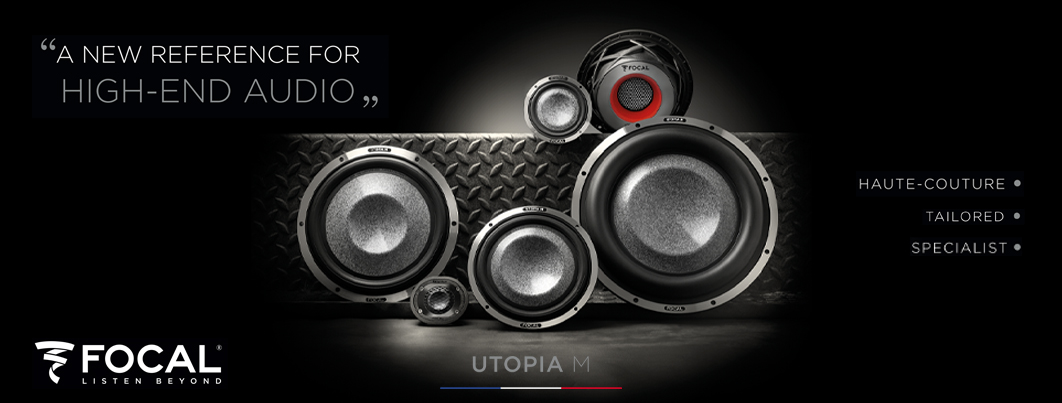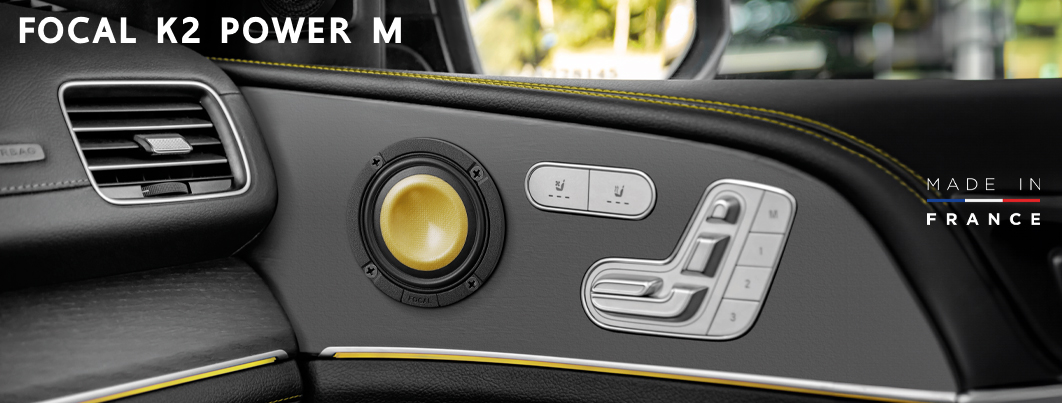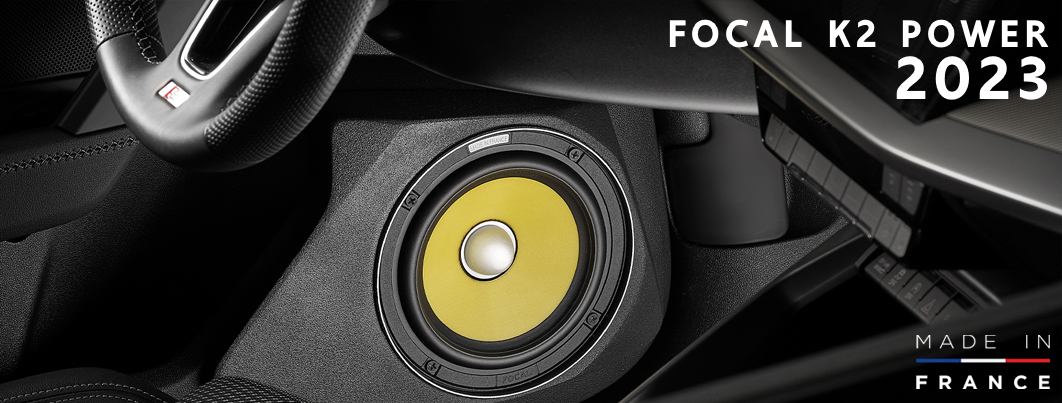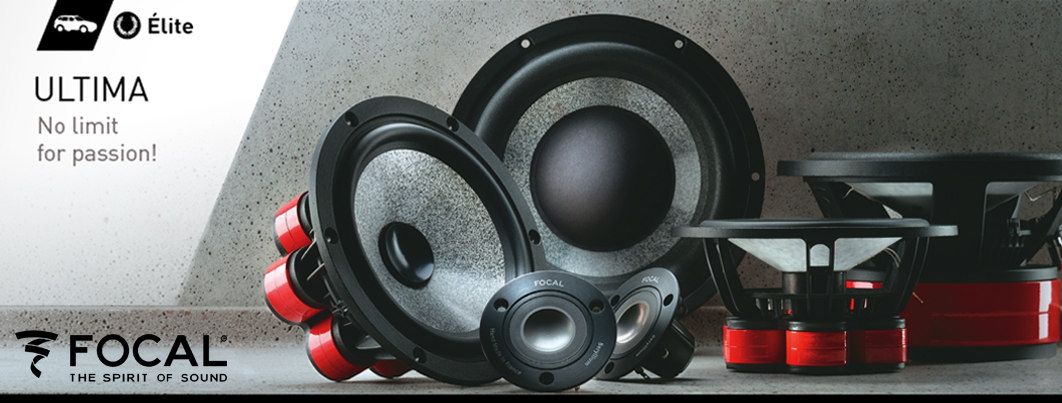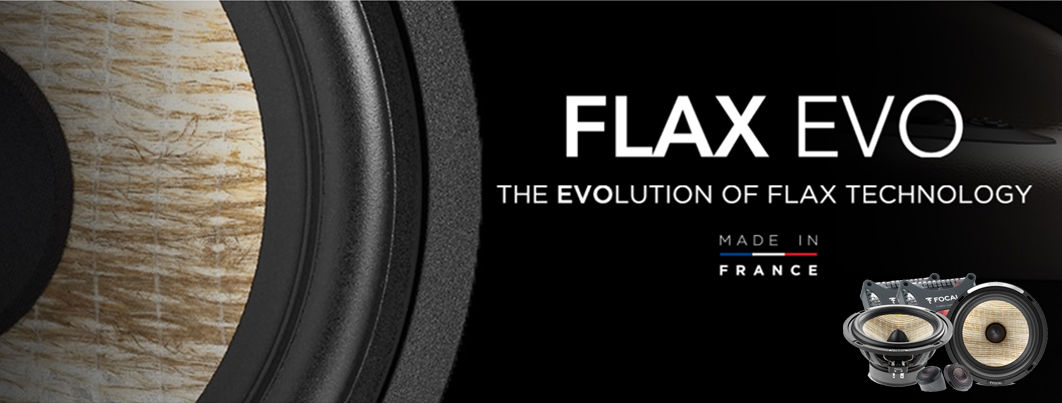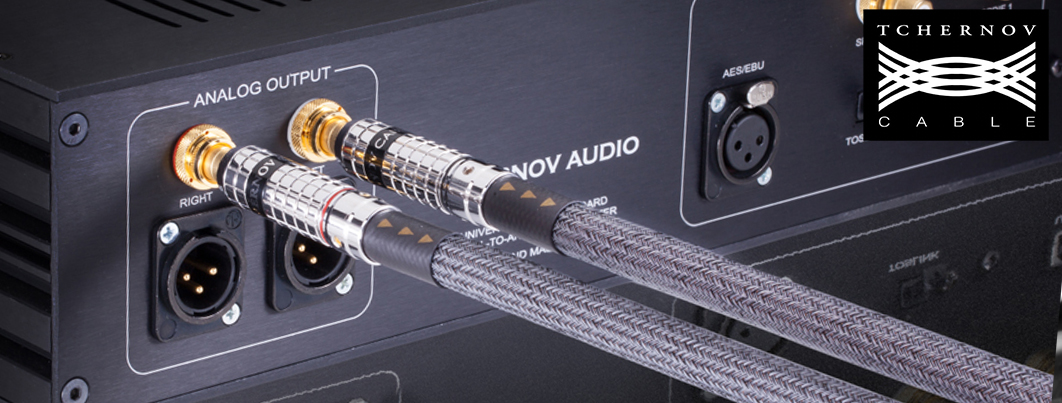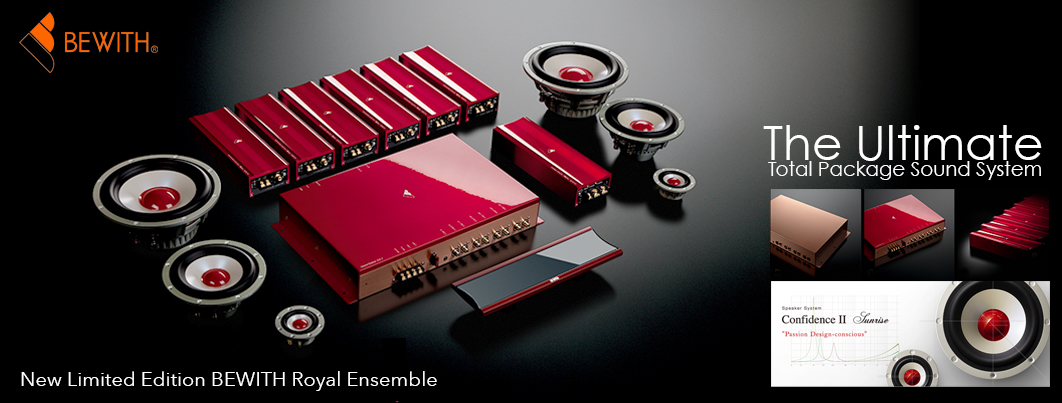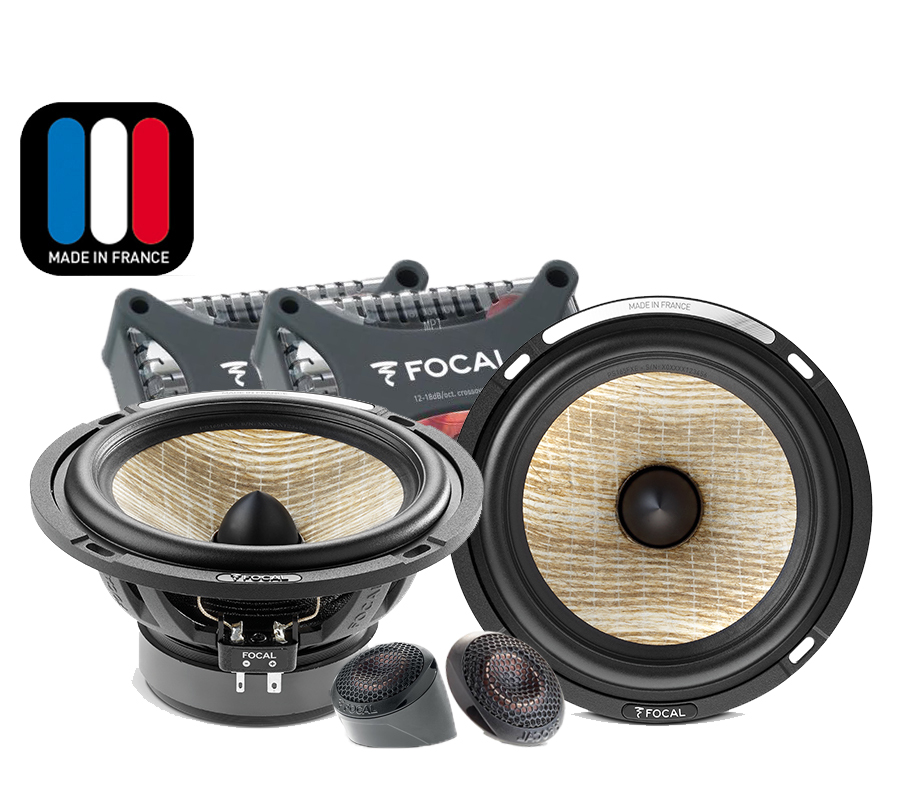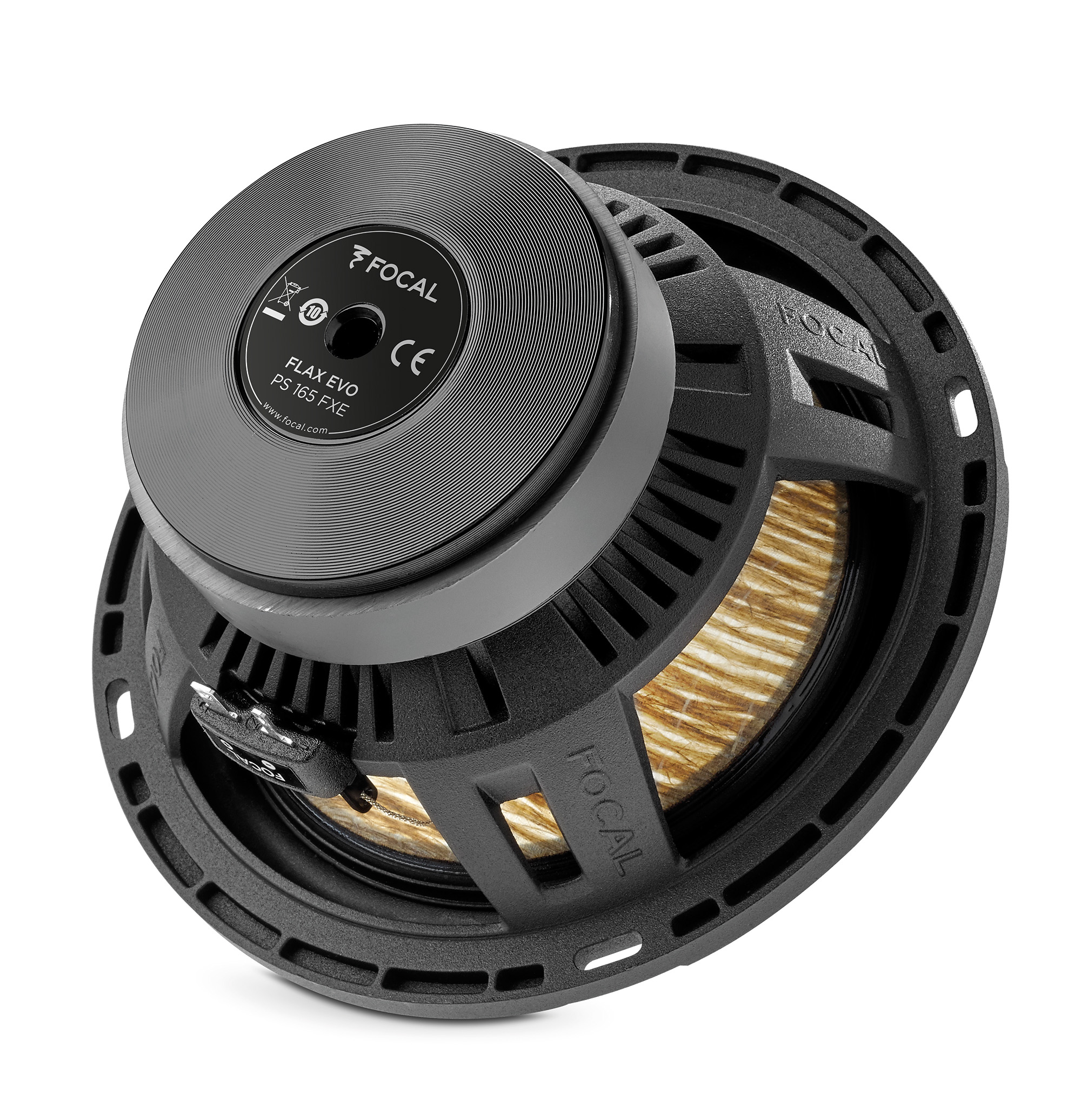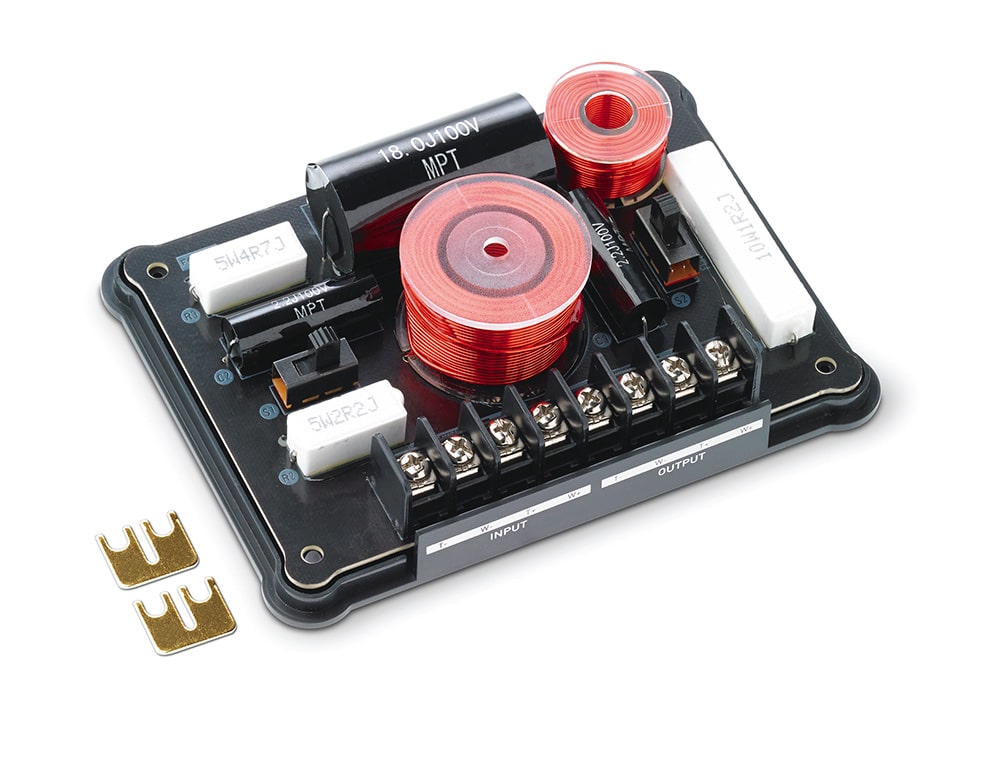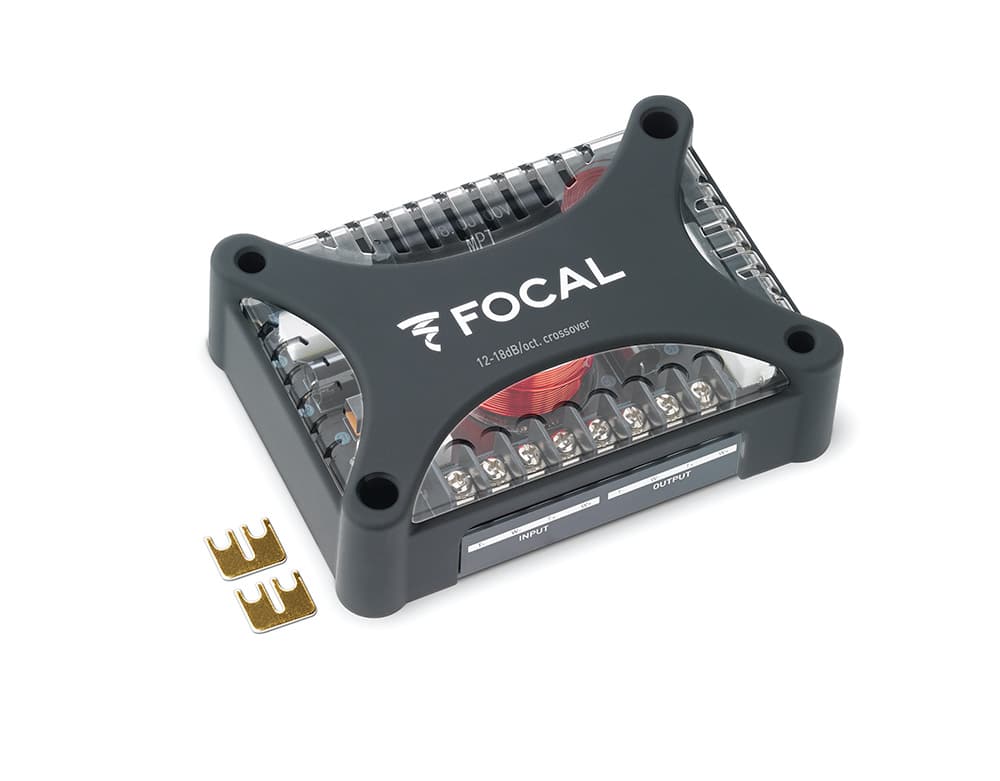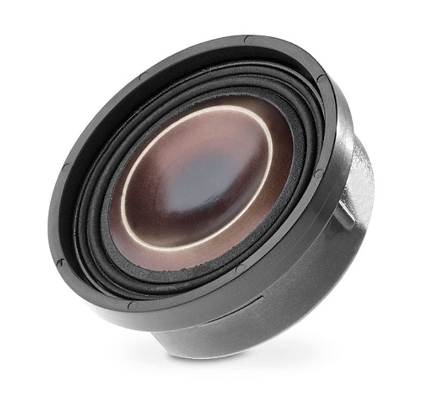16.5CM (6½'') BI-AMPLIFIED / 2-WAY COMPONENT KIT

The speaker drivers in the PS 165 FXE kit guarantee an easy installation and pure in-car listening pleasure. Combining the best of Flax technology with the latest Focal innovations, they offer one of the most natural sounds.
The TMD (Tuned Mass Damper) surround incorporated in the woofers stabilises the surround to achieve better control and greater neutrality and linearity, for an even denser bass. The central ogive cone, meanwhile, contributes to better sound dispersion.
The ‘M’-profile inverted dome TAM tweeters included in the kit offer a wider diffusion angle and greater sound definition, without directionality. Thanks to their tilted mounting, they are easy to install in the vehicle. A compact and pre-cabled audiophile crossover completes the kit. Finally, with its engraved aluminium basket and meticulous finishes, PS 165 FXE combines style, discretion and modernity for a premium system.
KEY POINTS
-
Unique, patented Flax cone
-
Butyl surround with exclusive 'TMD’ profile
-
Al/Mg ‘M’-profile inverted dome TAM tweeter
-
Bi-amplifier system
-
Made in France in the Focal workshops
-
High power handling
-
Deep, sustained bass
-
Wider diffusion angle
-
Natural, precise sound
-
Easy installation
The unique qualities of flax
Composite materials have properties suitable for applications where both rigidity and low mass are required. However, their disadvantage is that they lack damping, which leads to very poor control of vibrations. Often, as in the case of sports equipment, it is necessary to apply damping materials to absorb the intrinsic vibration of the material. It is clear that this is a particularly critical issue for loudspeaker diaphragms, one which requires us to ensure that there is sufficient internal damping within the structure of the material. Recent developments in this field combining composites and natural fibers have brought unexpected opportunities.Flax is twice as light as fiberglass, because the fiber is hollow. It also has very low elasticity which makes it ideal to increase the flexural rigidity of our sandwich. Moreover, it can be obtained in non-woven bundles of considerable diameter and it can therefore produce the thickness required for a sandwich. Synthetic fibers or foams originating from petrochemical resources are subject to inflation linked to the sharp rise in crude oil prices. Organic or ecological textiles, like flax, are thus becoming more and more price-competitive. Flax combines the three key factors required of the core of a sandwich material for loudspeakers: it has low density, a high tensile (Young’s) modulus of elasticity of up to 60GPa, and excellent internal damping
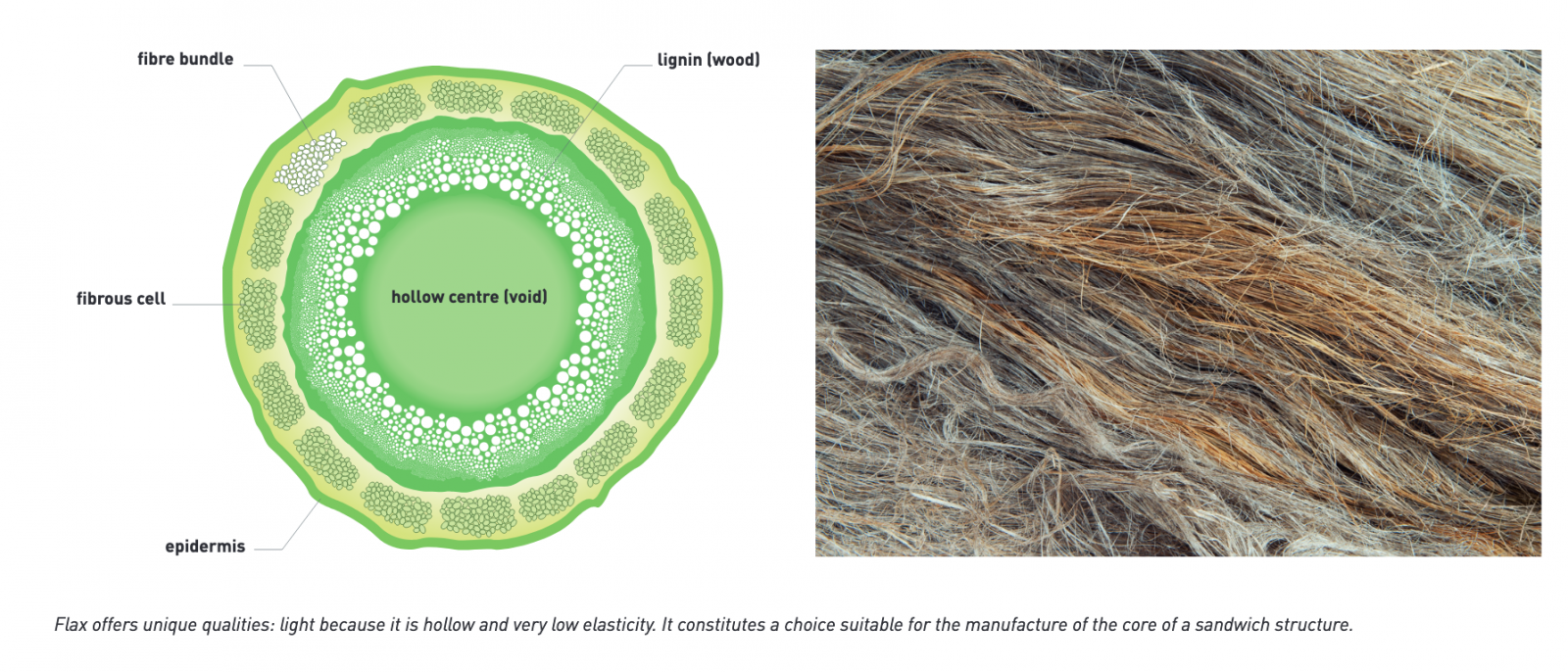
Performance comparison of various solutionsMany
prototypes have been developed by Focal in the course of the last two years using diaphragms made from single materials (including metals and thermoplastics), composites (with thermosetting, thermoplastic and acrylic matrices) and even in coated paper. We very quickly restricted our choice to composite/sandwich structures: single-skin structures with a pre-impregnated glass fiber face and a rear woven or non-woven linen face, and sandwich structures with internal and external skins in pre-impregnated glass fiber on a core of braided or non-braided flax, with straight or semi-exponential cone profiles.A measurement report was developed internally to make our research less empirical.At each stage test samples were produced to assess the mechanical performance of the new structures. To provide reference data, test samples of Polyglass and "W" sandwich in different thicknesses, as well as aluminium and glass fiber, were also produced so that we could validate our experiments with reference to known materials.Five criteria were analysed, with results that are shown in the graphs which follow. The designations for the sandwich structures are:• "W" sandwich/Focal patent: introduced in 1995, this is a sandwich with glass fiber on both sides of a core of acrylic/Plexiglass foam.• "F" sandwich/Focal patented in 2013 (N° 1350116): this is a sandwich with glass fiber on both sides of a core of flax. It will be used in Focal products from 2013.Low mass – a guarantee of high dynamic performance[Graph 1] For a 165mm mid-woofer, the mass of the diaphragm required to conserve good sensitivity is of the order of 10 grams. This corresponds to an ideal surface mass of the order of 300g/m2. The diagram opposite shows that a 2 mmthick "W" sandwich due to its mass is more suitable for application in pure woofer. Aluminium needs to be used in a very fine thicknesses of 0.1mm, which is completely impractical. It appears in the list only to validate the coherence of our tests.

High speed of sound in the diaphragm
– a guarantee of definition [Graph 4] An important criterion, the speed of sound propagation in a diaphragm is directly proportional to its breakup frequency. The speed of sound of the flax sandwich is on a par with that of the “W” sandwich, with a value double that of Polyglass. High velocity of sound is also a guarantee of high definition in the midrange. Polyglass, which was introduced nearly 30 years ago, now falls far short of the hybrid materials developed by Focal in the interim.High flexural stiffness – a guarantee of well controlled bass[Graph 5] This parameter defines how stiff the diaphragm is in bending. High bending stiffness is an essential criterion for a diaphragm working at bass frequencies, where significant differences in the air pressure on either face can otherwise cause deformation. High flexural rigidity brings a material close to the theoretical ideal of a diaphragm functioning as a rigid piston over its entire passband. The advantage of sandwich construction is obvious here since flexural rigidity increases with diaphragm thickness. As the lower graph shows, the “W” sandwich is without rival in this regard. Despite its relative thinness, the flax sandwich is nearly three times stiffer than the thicker Polyglass alternative.SummaryTo design a high performance diaphragm you have to optimise a complex set of criteria, which are for the most part contradictory. The composite solution using flax in a sandwich structure with fiberglass skins is a very harmonious way of combining low mass with high internal damping, high velocity of sound and high flexural rigidity.[Graph 6]

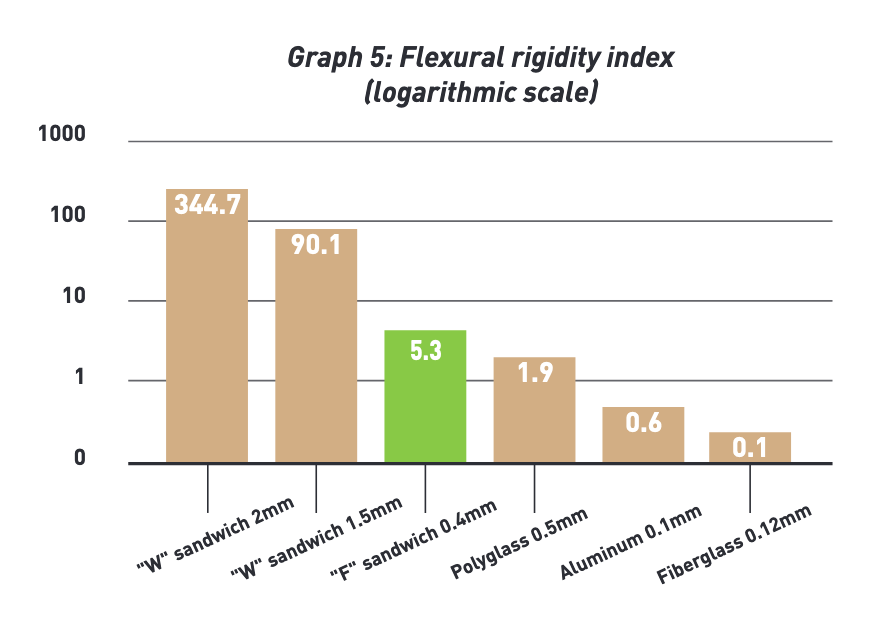

M-SHAPED INVERTED DOME TWEETER
A major innovation of the FLAX line, the inverted dome tweeter in ALUMINIUM / MAGNESIUM from a new profile: M-shaping.

M-profile inverted dome
Finite element analysis

INVERTED DOME tweeter
Finite element analysis
A FREQUENCY RESPONSE IMPROVED
This exclusive M-profile of the tweeter enables the extension of the frequency response to 22KHz, reducing distortion for a smoother diffusion and great precision in the very high end. Moreover, UV glue used on the voice coil reinforces its reliability and stability.
Frequency response comparison
M-profile inverted dome Tweeter / Inverted dome Tweeter
TMD - Tuned mass damper
The obsession with the midrange
The midrange register is no doubt the most complicated to control in a sound system. On one hand, there must be a smooth transition with the bass. On the other hand, it must be tuned to the tweeter in terms of dispersion and acceleration. This determines the homogeneity of the timbre and spatialisation.
For the past 20 years, we have been working on mastering the "break up" (the frequency at which the cone becomes deformed, leading to distortion) of our 3rd generation "W" cones and on drastically reducing the resonance of the tweeter with the IAL 2. Today, thanks to the power of finite element analysis, our teams have developed simulation software to visualise the dynamic behaviour of the suspension which connects the cone to the basket, thus revealing the performance issues requiring attention.
Tuned mass damper
Following the discovering of these issues, we had to conceive the equipment to solve them. The solutions already known for increasing the damping properties of the suspension all result in an increase of the mass which consequently alters definition. The answer came from a technology used in earthquake-resistant skyscrapers and which is also used for the suspension on racing cars! This technology is called a "Tuned Mass Damper": an additional mass oscillate in opposition to the resonance frequency to control it.
Applied to the speaker driver, the solution consists in simply two tubular rings on the suspension whose dimensions and position have been judiciously determined. They form our Tuned Mass Damper (TMD) and they stabilise the dynamic behaviour of the surround according to resonance, thus avoiding deformation of the cone without afflicting the dynamics. This innovation is patented.

Visual analogy of the surrounds


Our Tuned Mass Damper (TMD) consists of two tubular rings moulded onto the surround. On the left the default suspension, on the right, the TMD suspension. This simple solution, perfected thanks to our new software, stabilises the dynamic behaviour of the surround according to resonance, thus avoiding deformation of the cone without afflicting the dynamics.
Principle of the Tuned Mass Damper
The principle of the tuned harmonic damper (TMD): The graph on the left demonstrates the principle of the tuned mass damper. In red, an m1/k1 system with very pronounced resonance. By adding a mass/spring system m2/k2 (upper section of the diagram), there will be two resonance peaks, as represented by the blue curve. The drop or anti-resonance being previously based on the resonance of the main system, we get the green curve. Finally, by judiciously adding a damper, we obtain the purple curve. The resonance has almost disappeared!
With Sopra hi-fi speakers, we opted for exponentially shaped cones in order to increase frequency response, and consequently impulse response. Another reason for increasing definition.
Measurement and analysis

Improved response linearity between 1 and 2kHz and the frequency extension provided by the exponential cone profile..
Frequency response of our latest midrange driver (blue trace) compared to the previous-generation W-cone midrange, representing prior state-of-the art performance (red trace). Improvements to the magnetic circuit also contribute (see next section). NB: The dip at 3kHz in the blue trace is due to the tested driver not being fitted with a dust cap.

Effect of the harmonic damper on linearizing the frequency response between 1.5 and 2kHz (blue trace with TMD, red trace without).

Effect of the harmonic damper on nonlinear distortion, which is halved between 1.5 and 2kHz (blue trace with TMD, red trace without).

